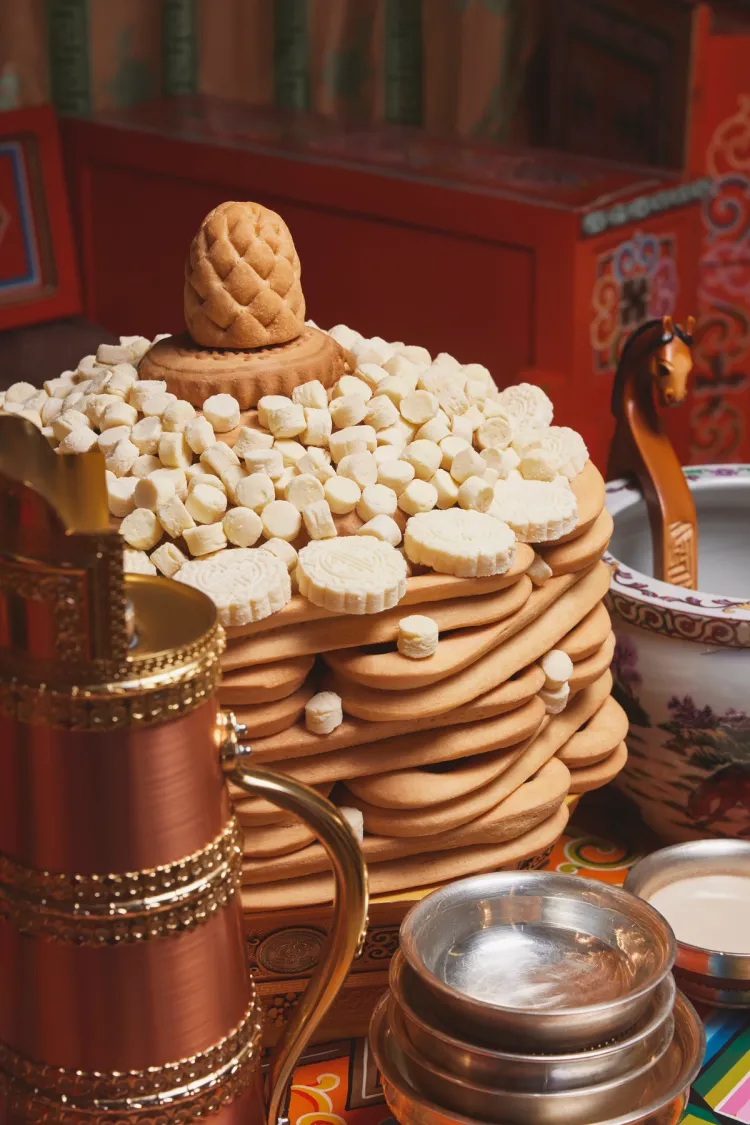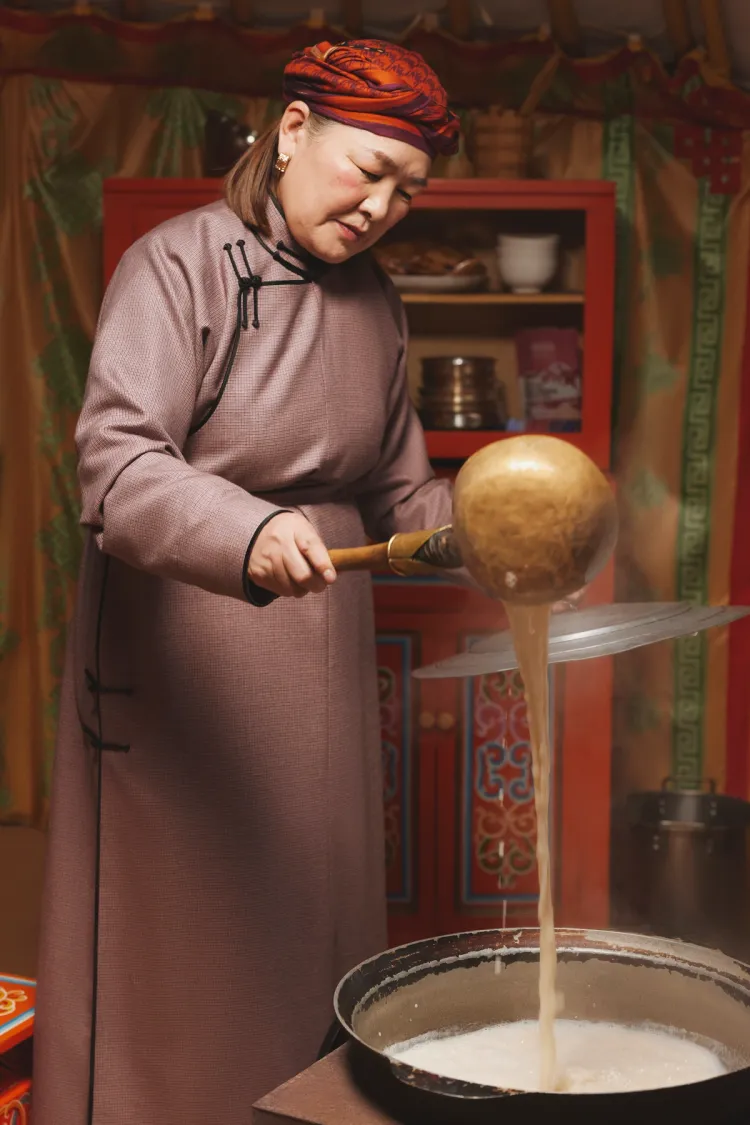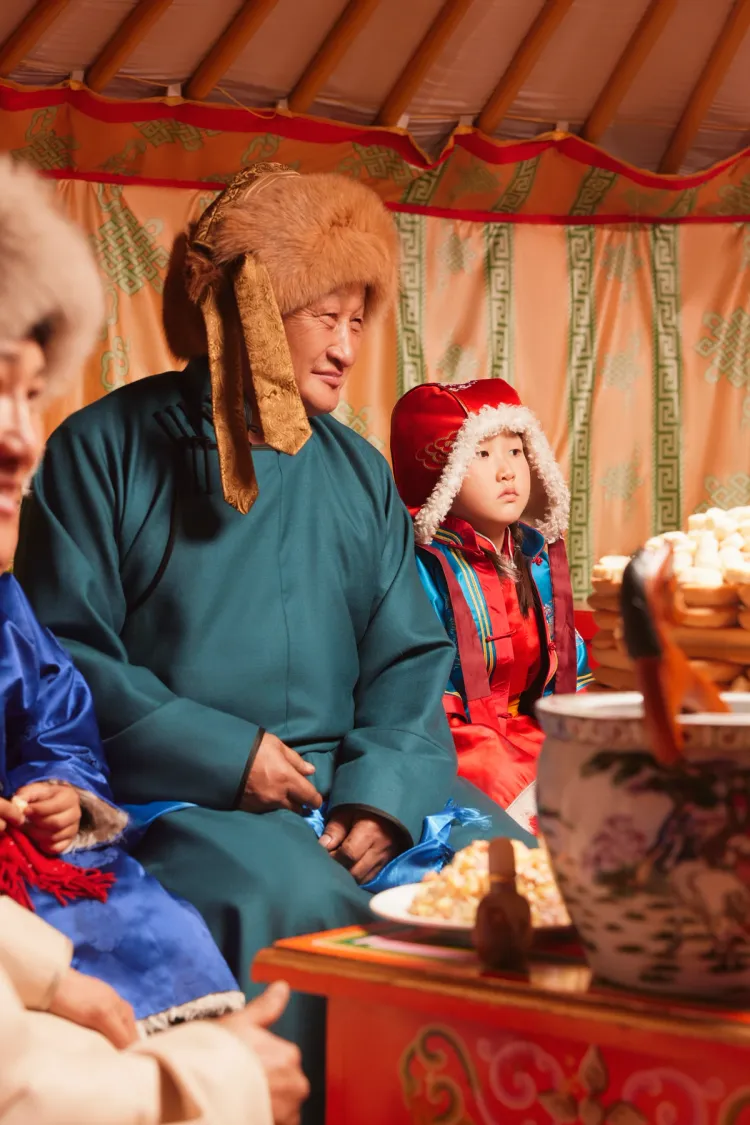The Mongolian Lunar New Year, known as “Tsagaan Sar” (meaning "White Moon"), is not just a festive occasion but a deeply ingrained cultural tradition that has resonated with the Mongolian people for centuries. The holiday is set to take place from February 10th to 12th, so welcome the Year of the Dragon with GOBI Cashmere.


What is Tsagaan Sar?
Tsagaan Sar, aptly named "White Moon" in Mongolian, is not just a calendar change, but a vibrant explosion of tradition, family, and fresh beginnings. This Lunar New Year, celebrated as winter relinquishes its grip and spring promises renewal, paints Mongolia in colors of joy and anticipation. Imagine streets bustling with families clad in their finest cashmere silkdeel robes, sharing warm greetings and exchanging auspicious gifts. Homes burst with the aroma of simmering dumplings and creamy milk tea, as elders weave tales of ancestors and spirits, blessing the year ahead.
Tsagaan Sar transcends mere festivities; it's a cultural anchor, reminding Mongolians of their nomadic roots, their connection to the natural world, and the enduring strength of their community. So, when the moon turns pure white, join the dance, savor the feast, and feel the warmth of this ancient celebration that rekindles the flame of hope in every Mongolian heart.
Roots of Origin
Historians believe Tsagaan Sar's roots stretch back to the Xiongnu nomads, who inhabited the Mongolian steppes around 2000 BC. Their cyclical calendar, influenced by the lunar cycle and solar solstices, laid the foundation for the celebration.
The rise of the Mongol Empire under Genghis Khan in the 13th century solidified Tsagaan Sar's importance. He standardized the Mongolian lunar calendar and made it an official imperial holiday, emphasizing its social and spiritual significance.
Throughout its rich history, Tsagaan Sar has adapted and evolved, yet its essence has remained unwavering. It symbolizes a time for renewal, fresh beginnings, and strengthening family bonds. It's a testament to the Mongolian people's resilience and their deep connection to their heritage.


Preparations of Tsagaan Sar
In the weeks leading up to Tsagaan Sar, Mongolia buzzes with anticipation as families prepare for the year's grandest celebration. Homes undergo meticulous cleaning, shedding the dust of the old year like winter sheds its snow. Imagine carpets beaten free of winter detritus, furniture gleaming under attentive polish, and windows sparkling to capture the first blush of the White Moon.
Mountains of dumplings, "buuz," are carefully crafted, each delicate fold an act of hope and blessing for the months ahead. Shelves overflow with traditional pastries, their golden surfaces dusted with sugar like miniature snowdrifts. Each family makes around 1,000-2,000 dumplings for the celebration. The air crackles with a joyful tension, every stitch, every sweep, every fold a promise of renewal and shared delight when Tsagaan Sar finally arrives.
The Day before Tsagaan Sar
The eve of Tsagaan Sar also known as “Bituun”, houses wear their cleanest outfits, scrubbed and swept until they gleam like frosted snow. The day explodes with a flurry of final touches - sheep rumps roasting in open ovens, mountains of buuz dumplings plumping in steaming broth, and children weaving colorful ribbons between Gers. Bituun is a day of bittersweet anticipation, a pause before the joyous whirlwind of Tsagaan Sar, where the old year is gently laid to rest and the next embraced with open arms and full bellies.
Like the name Tsagaan Sar, many light colored and white products, mostly dairy products, are placed to decorate the table such as white nuts, cheese, sugar cubes, candies, urum (coagulated foamy cream), and aaruul (dried curd) to name a few – can be put on the idee as decoration.


Celebration Day
On Tsagaan Sar morning, families will emerge, transformed in their finest finery. Men step out in deel robes the color of sun-kissed earth; their sashes woven with intricate knots of prosperity. Women's deel robes shimmer in jewel tones, adorned with delicate embroidery echoing the steppes' wildflowers. Children skip alongside, their deel robes miniature versions of their parents', a symbol of heritage passed down. Many people wear luxurious and elegant garments such as cashmere hats, scarves, or sweaters for mobility and comfort.
As the first sliver of white moon ascends, Mongolia will stand united, adorned in the vibrant tapestry of Tsagaan Sar tradition, ready to embrace the year with open arms, hearts, and stomachs full of hope and joy.
Celebrations start at the oldest family member's house, where guests are greeted according to their genealogy's seniority. Traditionally, guests are given white food or other delicacies, but these days, most gifts or money are exchanged. Mongolians give khadag, a long ceremonial silk, as a token of respect when they greet the oldest members. On New Year's Day, everyone asks each other how they're doing, "Amar bainauu?" (How do you do?) instead of "Sain bainauu?" (How are you?).
According to Mongolian customs, one's behavior and disposition during Tsagaan Sar determine their entire year. As a result, they disapprove of any disagreements, fights, excessive drinking, fighting, and misbehavior while celebrating.
During family gatherings, many people play traditional games such as horse ankle racing, singing folk songs, and telling stories. It is a way for people, especially children, to understand their culture and heritage and connect with their roots. One of the most important traditions of Tsagaan Sar is giving gifts. This symbolizes a token of appreciation for coming to visit. Show your love through our authentic Mongolian cashmere garments to our beloved ones from GOBI.
Tsagaan Sar is not just a calendar change, but a symphony of tradition, family, and hope, played out against the backdrop of the Mongolian steppes. It's a time for renewal, where families clad in their finest deel robes gather to share blessings and feast on stories as rich as the milky tea they sip. It's a celebration of resilience, where under the pale glow of the White Moon, Mongolians embrace the promise of spring and dance with the ghosts of the year gone by. Tsagaan Sar is more than just a holiday; it's a heartbeat, a rekindling of the flame of hope that shines brightly in every Mongolian heart.